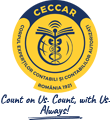For authors » Peer-review
The peer-review process
Once you've submitted your paper to the journal, it will be sent out for assessment by independent experts in the field, in a double-blind peer-review.
Texts in Process (TEP) follows some steps in the peer-review process:
1. The editors receive the manuscript, check its adaptation to the editorial guidelines and if it fits the journal’s aims and scope. Based on the evaluation results, the editors decide in the first instance its acceptance.
2. If accepted, the manuscript is sent to the external reviewers chosen by editors, who review the manuscript and send a report to the editors in which they provide the editor with comments, suggestions and a recommendation to reject/revise or accept the manuscript.
3. From the reports received, the editors check the reviews, make the final decision regarding the publication of the manuscript and communicate the decision to the author(s) with additional guidance, if any. The decision can be to: a) accept the manuscript; b) accept the manuscript with changes; c) request revisions of the manuscript and reassess the possibility of publication; d) reject the manuscript. The editors inform about the decision all those involved in the process.
4. Accepted manuscripts move into production and are published.
Under double-blind review, the identity of both authors and reviewers remain anonymous.
Review criteria
The reviewers will rate the article being reviewed according the following criteria:
I. Presentation: The articles and the language used in it should be presented in a clear manner, easily readable and understandable. This is the case even for technical papers on a narrow topic which should be written such that non-experts can comprehend the main contribution of the paper and the methods employed. The reader should make minimum effort to understand the information of the paper.
II. Appropriateness: Compatibility, agreeableness, congruity, suitability, and adequacy of the paper to the areas and topics of the journal.
III. Innovation: Innovation is related to new uses or new markets. The articles should elaborate on the new kind of possible users and/or utility of a product or a service, not necessarily new knowledge, new techniques, new technologies, new methods, or new applications.
IV. Originality: Are the problems and/or approaches in the paper completely new? The technique or the method were not used before.
V. Quality: The article is scientifically, technically, and/or methodologically sound and the results, proofs and/or reflections are correct.
VI. Novelty: According this criterion, the paper should not develop new techniques, or generate new knowledge, but it should, at least, apply, or combine, them in a unique and innovative way or reflect their applicability in a certain domain.
VII. Relevance: The ideas and methods and/or techniques used in the paper are significant, versatile, and/or applicable.
VIII. Significance: The ideas, methods and techniques used and/or described in the article are important and remarkable. The subject addressed in the article should be interesting and natural.







